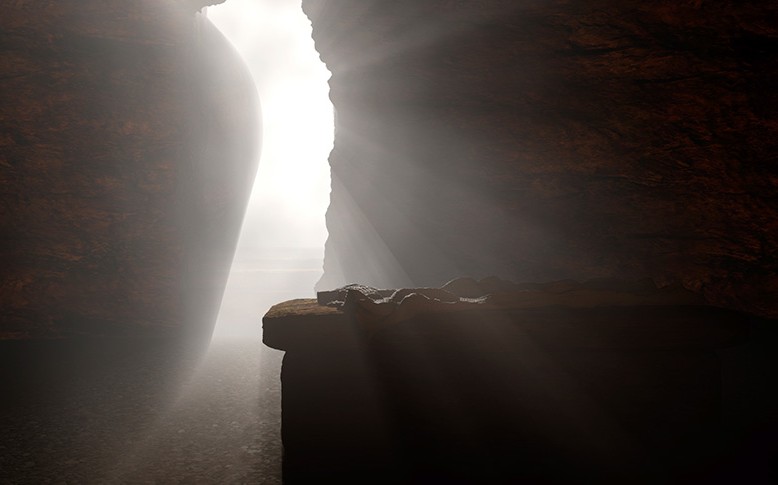 Thomas Aquinas is perhaps one of the greatest Christian thinkers of all time. Aquinas is the epitome of Christian apologists. Aquinas lived from January 28, 1225 to March 7, 1274. Aquinas was written off at an early age due to his large frame. But, Aquinas would later be known for his scholarly work. Among the thousands of pages written in multiple works, the work that stands head and shoulder above all of Aquinas’ works is the Summa Theologicae. Within this work of 3,020 pages, stands a classic argument known as the “5 Ways.” The “5 Ways” lays out 5 of the over 20 plus arguments for the existence of God. The following is an abbreviated version of Aquinas’ “5 Ways:”
Thomas Aquinas is perhaps one of the greatest Christian thinkers of all time. Aquinas is the epitome of Christian apologists. Aquinas lived from January 28, 1225 to March 7, 1274. Aquinas was written off at an early age due to his large frame. But, Aquinas would later be known for his scholarly work. Among the thousands of pages written in multiple works, the work that stands head and shoulder above all of Aquinas’ works is the Summa Theologicae. Within this work of 3,020 pages, stands a classic argument known as the “5 Ways.” The “5 Ways” lays out 5 of the over 20 plus arguments for the existence of God. The following is an abbreviated version of Aquinas’ “5 Ways:”
The first and more manifest way is the argument from motion…For motion is nothing else than the reduction of something from potentiality to actuality. But nothing can be reduced from potentiality to actuality, except by something in a state of actuality…Therefore it is necessary to arrive at a first mover, put in motion by no other; and this everyone understands to be God.
The second way is from the nature of the efficient cause. In the world of sense we find there is an order of efficient causes. There is no case known (neither is it, indeed, possible) in which a thing is found to be the efficient cause of itself; for so it would be prior to itself, which is impossible…Now to take away the cause is to take away the effect…Therefore it is necessary to admit a first efficient cause, to which everyone gives the name of God.
The third way is taken from possibility and necessity, and runs thus. We find in nature things that are possible to be and not to be, since they are found to be generated, and to corrupt, and consequently, they are possible to be and not to be. But it is impossible for these always to exist, for that which is possible not to be at some time is not. Therefore, if everything is possible not to be, then at one time there could have been nothing in existence…Therefore we cannot but postulate the existence of some being having of itself its own necessity, and not receiving it from another, but rather causing in others their necessity. This all men speak of as God.
The fourth way is taken from the gradation to be found in things. Among beings there are some more and some less good, true, noble, and the like…Therefore there must also be something which is to all beings the cause of their being, goodness, and every other perfection; and this we call God.
The fifth way is taken from the governance of the world. We see that things which lack intelligence, such as natural bodies, act for an end, and this is evident from their acting always, or nearly always, in the same way, so as to obtain the best result…Now whatever lacks intelligence cannot move towards an end, unless it be directed by some being endowed with knowledge and intelligence; as the arrow is shot to its mark by the archer. Therefore some intelligent being exists by whom all natural things are directed to their end; and this being we call God (Thomas Aquinas, Summa Theologicae I, 2, 3.;Kreeft 1990, ed. 65-69).
Some bring objections to Aquinas’ “5 Ways.” In this article, the “5 Ways” will be briefly explained, then the objections will be given, and finally a refutation of those objections will be provided.
Summary of the “5 Ways”
The first way of Aquinas deals with the evidence of first cause, or a need for a prime mover. As we will discuss later, an infinite regress of past events is impossible. The world exists of causes and effects. Effects occur because there is a necessary cause. Take for instance that a person lined up five rows of dominoes. Each row of dominoes consisted of 10 domino pieces with the 10th domino angled so that it would set off the sequential row of the next 10 dominoes. A person who is oblivious to what is transpiring is positioned so that he only sees the last row of dominoes. Suppose someone knocks down the first domino which causes a chain reaction towards the place where the observer is onlooking. The observer only sees the last row of dominoes collapse, but could logically assume that a force put in motion the chain reaction that he observed. This is what Aquinas addresses in this way. There must be a prime mover, or an uncaused cause, to set things in motion. That prime mover must be God.
Aquinas’ second way expounds on the first way. Aquinas shows that a cause cannot create itself. Therefore, there must be something beyond the scope of the thing being created. This would posit that God would be beyond the scope of space and time. God cannot be affected or influenced by the things that are created, but that everything is influenced and given shape by the one who put it in motion.
Aquinas’ third way speaks to the fact that finite things cannot have infinitely existed. Aquinas was way ahead of his time on this argument. For the Big Bang Theory only proves what Aquinas had postulated in the 1200s that the universe did not exist forever, but must have had a causing agent. Therefore, that causing agent was and is God.
Aquinas’ fourth way speaks to what is commonly called the “moral argument.” This is that since there is goodness in the world, that goodness points to an absolute good, or an absolute perfection. An absolute good agent must exist if there is goodness in the world. Therefore, if objective morals exist, an objective moral lawgiver must exist. That lawgiver is God.
Aquinas’ fifth way addresses what is commonly called the “teleological argument.” Aquinas sees design in the universe which he calls “governance of the world.” The world is directed towards a certain end. That end shows forth design. Design shows forth the necessity for a Designer. That Designer is God.
Objections to the “5 Ways”
In Millard Erickson’s book Christian Theology, Erickson lists some common objections given to Aquinas’ “5 Ways.” Erickson does not seem to endorse these critiques, but offers them for the sake of knowledge. Erickson writes,
“Some of the problems with the arguments relate to assumptions which they contain. Thomas assumed that there cannot be an infinite regress of causes…But numerous persons today would disagree. A linear sequence of causes is not the only way to view causation. Some would question the necessity of asking about ultimate causation. Even if one does ask, however, there is the possibility of a circle of causes, with one cause within the closed system causing another. Similarly, the assumption that motion must have a cause or explanation is not universally held today. Reality may well be dynamic rather than static.
“A further problem was alluded to earlier. Suppose one succeeds in proving, by a valid argument, that this world must have a cause. One cannot, however, conclude from this that such a cause must be infinite. One can affirm only that there was a cause sufficient to account for the effect.
“The teleological argument also encounters the problem of what might be termed the ‘dysteleological.’ If the argument is to be truly empirical, it must, of course, take into account the whole sweep of data” (Erickson 1998, 185-187).
To summarize, Erickson addresses the objections brought forth by the Scottish atheist humanist of the 1700s known as David Hume. The first objection deals with the issue of infinite regress of past events. The second objection deals with sufficient cause. Is there evidence of a sufficient cause other than God? The third deals with the teleological argument. Do the existence of diseases, earthquakes, and natural disasters demerit the design of the cosmos or the goodness of such a God?
Refutations of the Objections
The first and second objections deal with the issue of infinite regress of past events. Take for instance the domino illustration presented earlier. The observer who witnessed the last row of dominoes may naturally postulate that something started the chain reaction leading to the collapse of the final row. However, say that the observer has a friend who is a skeptic. The friend says, “Aw, the dominoes fell on their own. There was no need for a cause.” This seems to be the same argument. Erickson brings the argument of circularity into play. However, even if there were a circular set of causes, the demand for a first cause would still be necessary. Why?
For one, the second law of thermodynamics states that things within this universe runs out of energy. Entropy, or decay, increases within each set of natural things. A car engine will eventually run out of gas. A roller coaster will eventually run out of momentum. The human body will eventually decay and die. The sun will eventually run out of hydrogen and will either explode or implode. The universe itself seems to be expanding and cooling. Therefore, a natural system of causeless causes is nonsensical.
Secondly, Alexander Vilenkin and Arvind Borde have recently given a theorem that as Craig writes, “closed the door on the possibility (Craig and Sinclair 2012, 141) of an infinite regress of past events.
“Our argument shows that null and time-like geodesics are, in general, past-incomplete in inflationary models, whether or not energy conditions hold, provided only that the averaged expansion condition H(av) > 0 holds along these past-directed geodesics” (Borde, Guth, & Vilenkin 2003, 3). …So if Einstein’s gravity requires some modification, our conclusion will still hold. The only assumption that we made was that the expansion rate of the universe never gets below some nonzero value, no matter how small. This assumption should certainly be satisfied in the inflating false vacuum. The conclusion is that past-eternal inflation without a beginning is impossible” (Vilenkin 2006, 175).
Craig writes, “The Borde-Vilenkin-Guth (BVG) singularity theorem is not widely accepted within the physics community. As of this writing, it has gone largely unchallenged. Instead a new round of model building has resulted based on exceptions to this theorem” (Craig and Sinclair 2012, 142). Therefore, what this all shows is that there must have been a beginning beyond the scope of natural causes which are known in the universe in which we live. This demands the existence of an uncaused Cause…ie. God.
The third objection assumes that God does not grant human freedom. Some bad occurrences may come by the will of humans to sin rather than to seek God, the source of all goodness. It also wrongly assumes that good cannot come from bad. The Bible even states, “And we know that God causes everything to work together for the good of those who love God and are called according to his purpose for them” (Romans 8:28, NLT). This means that even through bad things, good can come. For instance, there is a woman who I know well that is afflicted with cerebral palsy. She told me, “I have embraced my difficulty. It has made me the person I am today. I may not have had the close relationship with God that I have today if it were not for the disability” (Smith, Conversation). This argument assume that a good God cannot coexist with badness in an otherwise good creation. These issues have been dealt with in other articles, therefore we will not expound on this issue further (See articles: “Problem of Evil” by Drew Payne and “Why Does a Loving, Powerful God Allow Suffering and Evil?” by Brian Chilton).
Conclusion
The arguments of Thomas Aquinas still stands as logically sound today as much as they did when Thomas delivered them in the 1200s. In fact: going against Thomas’ “5 Ways” leads to logical absurdities. One would have to accept a universe where effects occur with no causes. If anyone can figure out how to do that, figure out a way to magically pop a million dollars into my bank account. In any other genre, such a conclusion would be seen as absurd. Yet those who disagree that the universe had a cause will accuse Christians of absurdities in their belief of the miraculous. It would seem that a universe that could pop out of nothingness would be far grander a thing to be conceived than any miracle contained in all of Christendom. Another problem is that the rejection of Thomas’ “5 Ways” leads to moral relativism, which leads to no absolutes concerning right and wrong. In such cases, the acts of Hitler and Stalin could be seen as just as good as the works of Mother Teresa and Samaritan’s Purse. Obviously, the works of Teresa and the work of Samaritan’s Purse are seen as good and the works of Hitler and Stalin are seen as utmost evil. This shows a moral absolute which comes from a morally absolute good found in God. Therefore, this writer is persuaded that Thomas Aquinas’ “5 Ways” are just as legitimate and, perhaps, more logically sound in light of recent evidence than ever before.
Holding to the logic of the Christian faith,
Pastor Brian
Bibliography
All Scripture, unless otherwise noted, comes from Tyndale House Publishers, Holy Bible: New Living Translation, 3rd ed. Carol Stream, IL: Tyndale House Publishers, 2007.
Aquinas, Thomas. Summa Theologica I,2,3. The Fathers of the English Dominican Province, translators. Summa of the Summa, Peter Kreeft, Ed. San Francisco, CA: Ignatius Press, 1990.
Borde, A, Guth, A., and Vilenkin, A. (2003) Inflationary spacetimes are not past-complete. Physical Review Letters 90, 151301, preprint: http://arxiv.org/abs/gr-qc/0110012.
Craig, William Lane, and James D. Sinclair. “The kalaam cosmological argument,” The Blackwell Companion to Natural Theology. William Lane Craig and J.P. Moreland, editors. Malden, MA, Oxford, UK, and West Sussex, UK: Wiley-Blackwell Publishing, 2012.
Erickson, Millard. Christian Theology, 2nd ed. Grand Rapids, MI: Baker Academic, 1998.
Smith, Cindy. Conversation in June, 2013.
Villenkin, A (2006) Many Worlds in One. New York: Hill & Wang.








Hi, after reading this remarkable post i am too cheerful to share my experience
here with mates.
Hi, after reading this remarkable post i am too cheerful to share my experience
here with mates.
[…] Objections to Thomas Aquina’s Objectors. […]